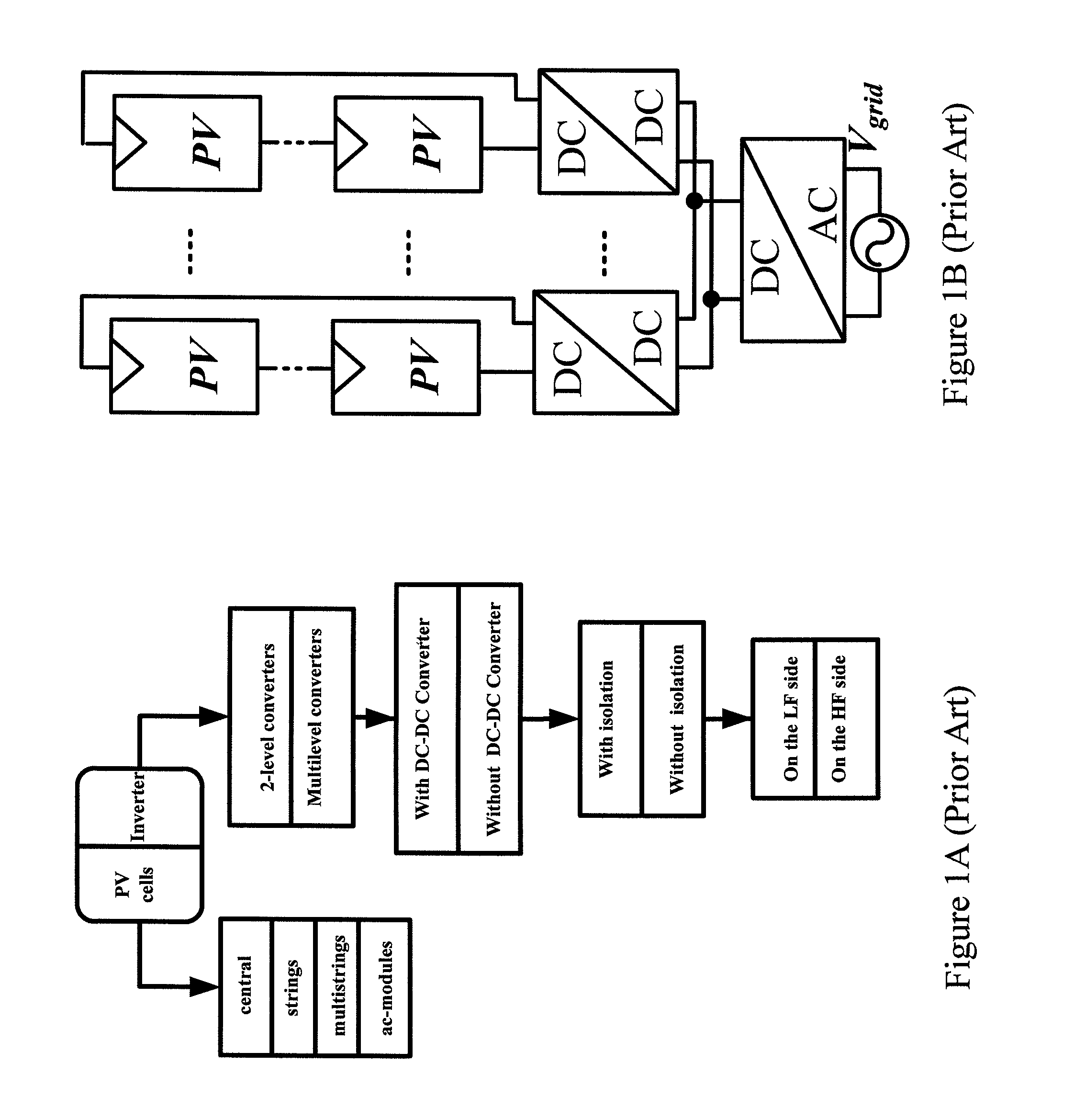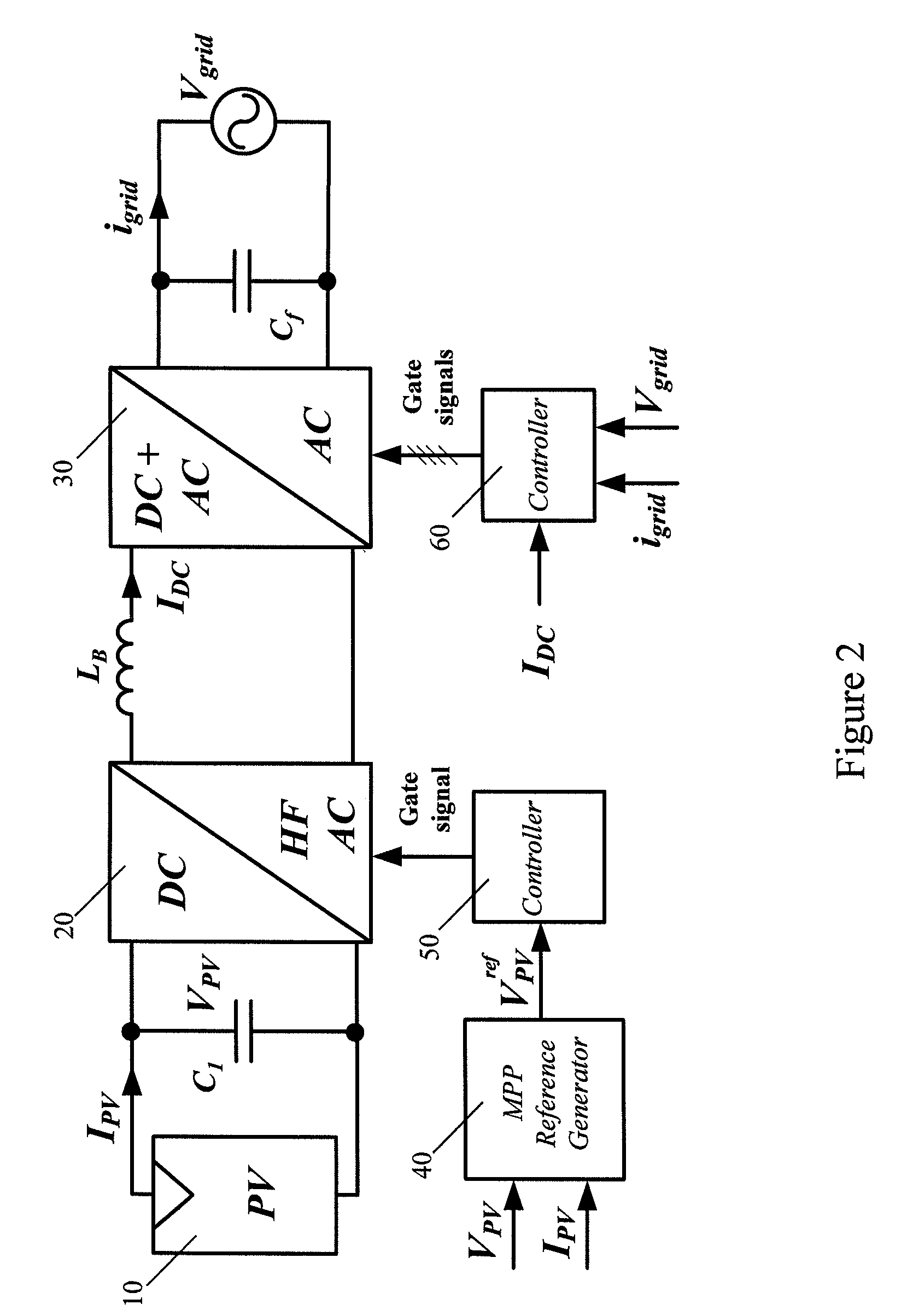Inverter for a distributed power generator
a technology of distributed power generators and inverters, which is applied in the direction of dc-ac conversion without reversal, process and machine control, instruments, etc., can solve the problem of limiting the life of the circui
- Summary
- Abstract
- Description
- Claims
- Application Information
AI Technical Summary
Benefits of technology
Problems solved by technology
Method used
Image
Examples
example
[0100]To demonstrate the impact of the irradiance level, input voltage level, and partial shading on the performance of a two-string PV cell inverter as shown in FIGS. 5B and 8, a simulation was carried out using PSIM 7.0 software and the values set forth in Table I, and the results are shown in FIG. 10. The system was started with string #2 partially shaded (40% of the full irradiation level) and string #1 at full power. At t=0.2 (s) both strings were partially shaded at 15% of the full irradiation level and the system response was obtained. At t=0.3 (s) the temperature of the PV cells was increased so that the output voltage of the PV cells decreased from 150V to 80V, which is less than the grid voltage. At t=0.4 (s) both strings were exposed to full irradiance. It can be seen from FIG. 10 that after each change, the controller quickly stabilized the output current. In addition, the maximum input power extraction was almost instantaneous, confirming the fast dynamic response of th...
PUM
 Login to View More
Login to View More Abstract
Description
Claims
Application Information
 Login to View More
Login to View More - R&D
- Intellectual Property
- Life Sciences
- Materials
- Tech Scout
- Unparalleled Data Quality
- Higher Quality Content
- 60% Fewer Hallucinations
Browse by: Latest US Patents, China's latest patents, Technical Efficacy Thesaurus, Application Domain, Technology Topic, Popular Technical Reports.
© 2025 PatSnap. All rights reserved.Legal|Privacy policy|Modern Slavery Act Transparency Statement|Sitemap|About US| Contact US: help@patsnap.com



